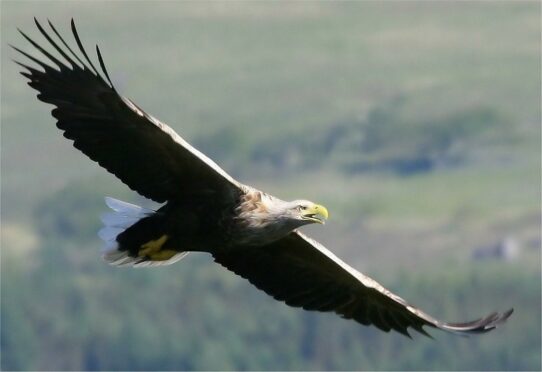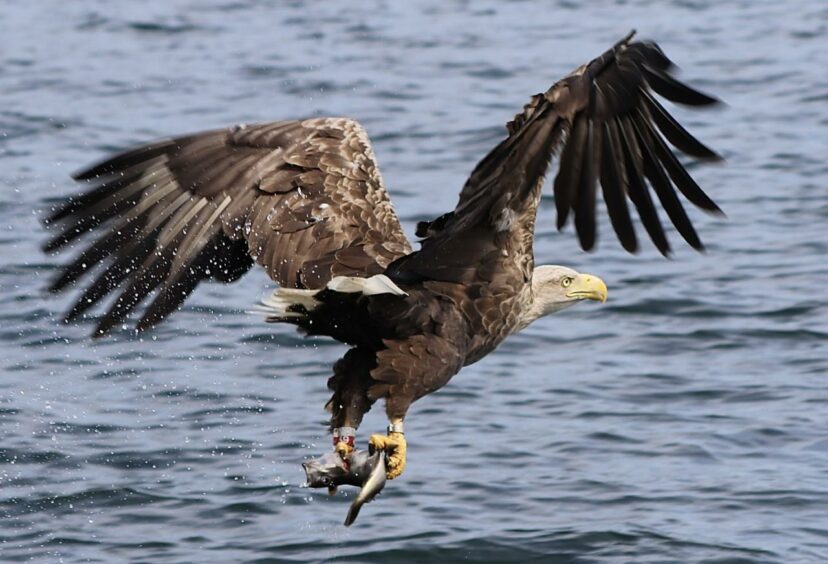Wildlife enthusiasts keen to catch a glimpse of white tailed eagles have boosted Mull’s local economy by millions.
A new RSPB Scotland study has found that between £4.9million to £8million tourist spend is attracted annually by the birds.
The Economic Impact of White-Tailed Eagles on the Isle of Mull shows that this money supports between 98 to 160 full-time jobs on the island, and between £2.1million and £3.5million of local income annually.
Progressive Partnership carried out the research, which was then reviewed by an academic and an economic.
It was based on interviews with visitors carried out at five sites across Mull, amounting to 1,248 people in total, who were quizzed about the length of their stay, spending habits and the motivation behind their trip.
Mull is home to 22 pairs of eagles, and in 2019 29% of tourists cited them as an important factor for their visit to the island, up from 23% in the 2010 study.
Tourism spend inspired by these eagles has also increased since 2010.
As well as the majestic eagles, tourists are also attracted to Mull for the scenery, landscape, tranquility and wildlife.
Thriving wildlife creates a thriving island
White-tailed eagles used to be widespread across Scotland, but human persecution led to their extinction in 1918. A reintroduction programme began on the Isle of Rum in 1975 and in 1985 the first wild chick from the reintroduced population hatched on Mull.
RSPB Scotland director Anne McCall said: “Mull once again holds an important breeding population of white-tailed eagles, which are an incredible tourism draw for the island. This study makes clear the link between restoring nature and the local income earning opportunities that arise from it. However, living with these birds can pose challenges for some and it’s important that positive management protects both the birds and the livelihoods they can occasionally affect.
“What the study can’t measure is those human benefits less tangible than economic ones such as physical and mental well-being, public education, and cultural resonance.
“The Scottish population of these birds also provides important indications of how our environment is faring in the nature and climate emergency. For many people the delight of seeing a white-tailed eagle is reason enough to take care of them but this study makes clear that the birds can pay their way too.”
Partnerships have been key to the success of the white-tailed eagle reintroduction in Mull including those between nature conservation organisations, funders, land managers and the local community.
The award-winning Mull Eagle Watch began in 2000 to provide places where people could have great views of the birds without disturbing them.











